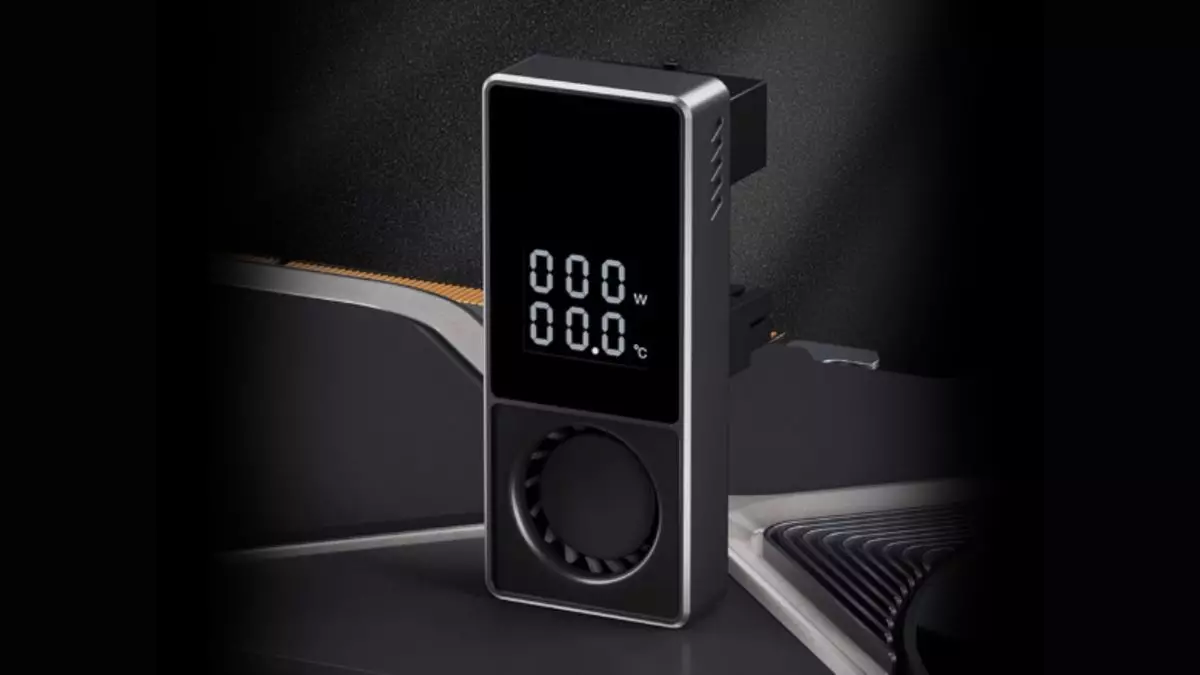The rapid advancement of graphics card technology has brought about unprecedented power demands, particularly with the recent release of the RTX 50 series. However, many gamers still gravitate toward the RTX 40 series, largely because of accessibility issues surrounding the latest models. In this context, innovative solutions are materializing aimed at enhancing power delivery and thermal management—one such solution is a unique graphics card adapter with integrated cooling features.
The release of high-performance cards like the RTX 4090 has come with increasing concerns regarding heat generation and power consumption. Gamers and tech enthusiasts are justifiably anxious when it comes to their rigs, especially with reports of connectors melting and cables overheating. Acknowledging this challenge, a company named K.A has introduced a 16-pin graphics card adapter priced at around 30 dollars. This device represents a significant step towards mitigating the risks associated with high TDP (thermal design power) graphics cards by incorporating active cooling features and real-time monitoring capabilities.
The adapter, available on Chinese e-commerce platform TaoBao, is designed specifically for the RTX 40 series. It not only provides a physical connection but is engineered to actively cool the wiring, thereby reducing the chances of heat-related issues. With a built-in screen displaying real-time power consumption and temperature data, this innovation serves as both a functional and aesthetic upgrade for those who prefer to showcase their build through transparent side panels.
While this adapter undoubtedly addresses some pressing issues, it’s crucial to recognize the potential downsides of using third-party solutions. Power supply units (PSUs) are designed intricately to handle the specific needs of the components they support. A well-informed PSU expert warns that opting for third-party cables or adapters can be precarious; using manufacturer-provided cables is often the safest course of action. The integration of adapters into a gaming rig can produce complications if not executed correctly, especially if the connection isn’t secure.
Despite previous issues encountered with the design of the 12VHPWR connector, such as the infamous melting connectors during early user experiences, it’s heartening to see that manufacturers like MSI have taken steps to improve usability with color-coded designs. Nevertheless, as gamers continue to push the limits of what high-performance hardware can achieve, it remains vital to prioritize safety and reliability over convenience.
As the gaming community eagerly waits to see what the next iterations of graphics cards—the RTX 5090s or RTX 5080s—will deliver, it’s essential for manufacturers to embrace not only advancements in performance but also the importance of monitoring and managing power requirements. K.A’s adapter serves as a concept that could inspire further innovation in this arena. It suggests that future graphics cards might well incorporate built-in monitoring tools, reducing the need for third-party solutions altogether.
In the age of overclocking phenomena, where enthusiasts seek every possible edge in performance, the coupling of advanced cooling solutions and real-time monitoring will become increasingly critical. This might encourage manufacturers to produce power supplies and graphics cards that come equipped with enhanced feedback mechanisms, allowing users to easily manage and monitor heat generation and power consumption—thus preventing potential issues before they arise.
The Bottom Line
While the new 16-pin adapter from K.A could signify positive strides towards resolving power and temperature issues faced by high-performance graphics cards, caution is warranted. The gaming community needs to maintain a rigorous focus on hardware integrity and reliability, where official components are always prioritized over third-party add-ons. Balancing performance with safety will be essential as both technology and demands evolve, making it imperative for manufacturers to adapt and innovate in ways that serve the best interests of gamers. The future may well hold promise for integrated solutions that simplify gaming builds while maximizing performance and safety, ensuring that enthusiasts can pursue their passions with confidence.

